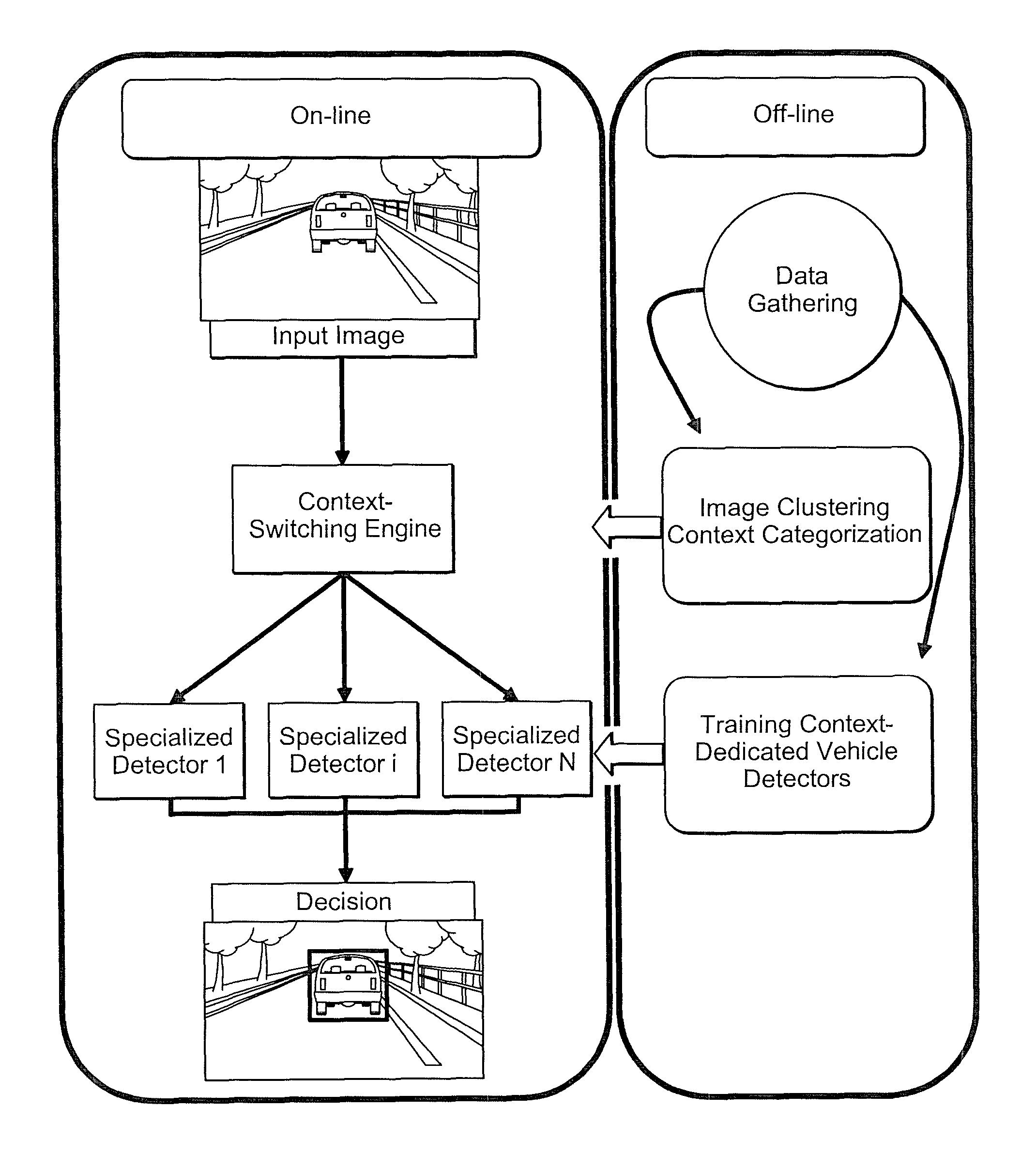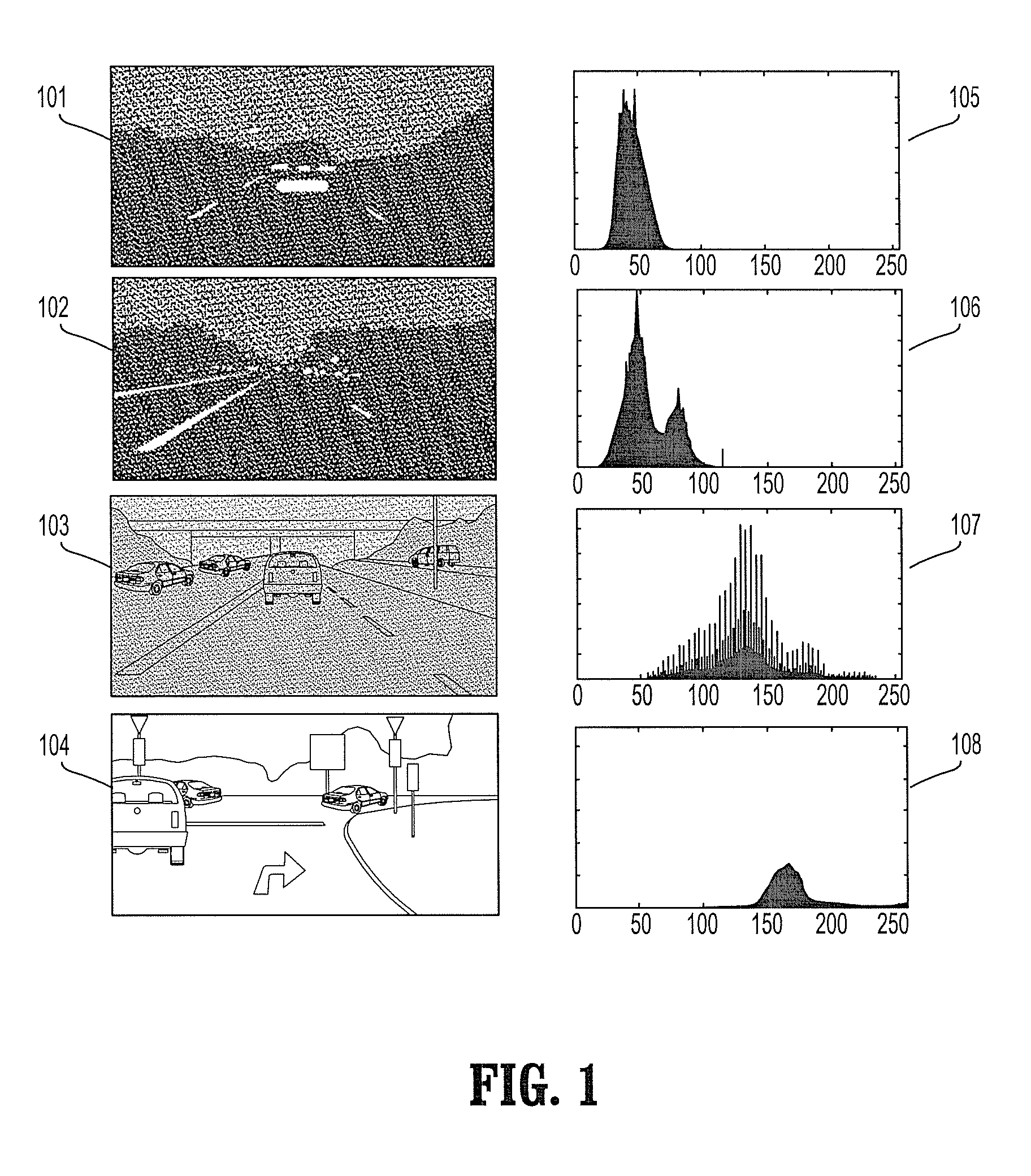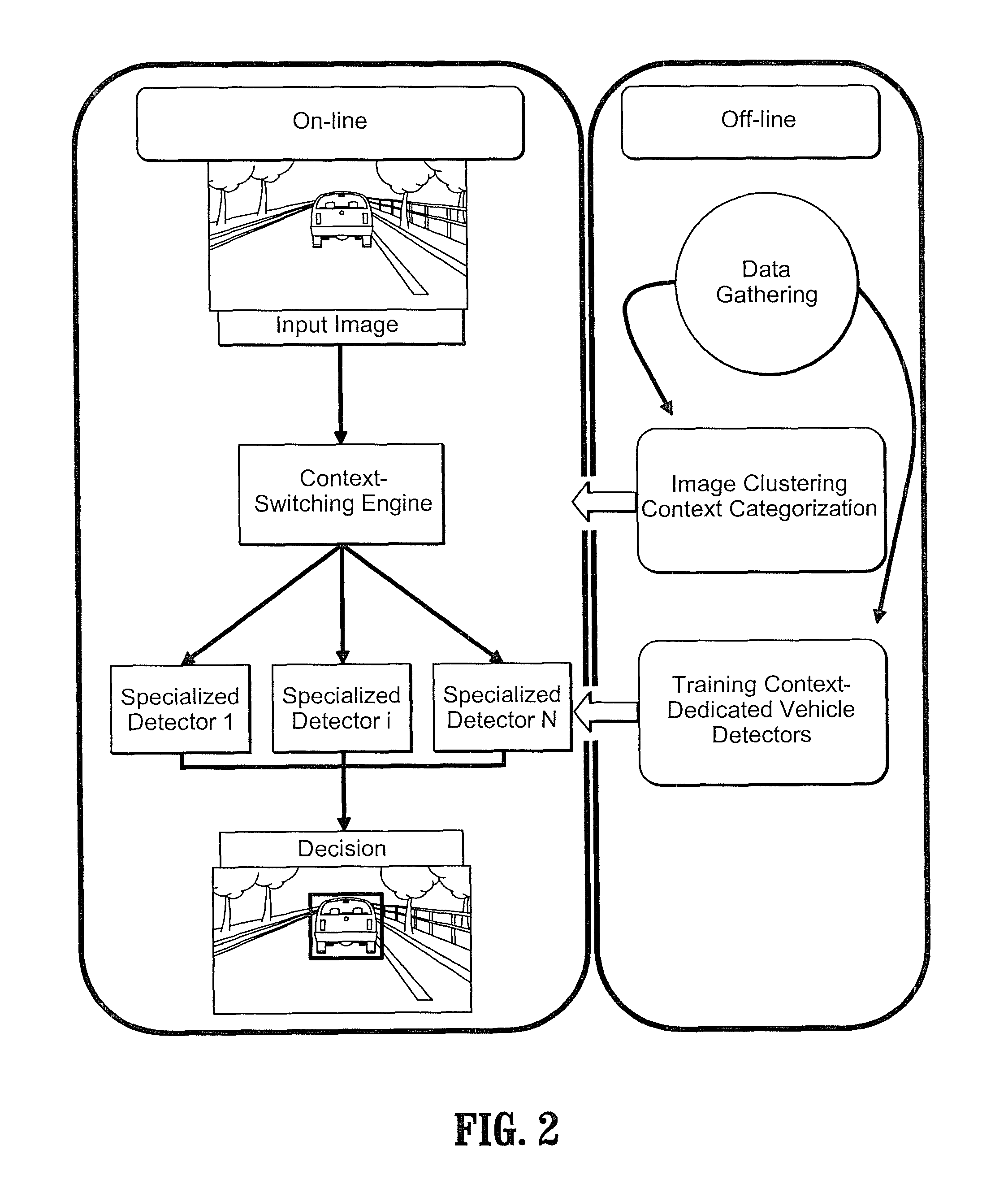Context adaptive approach in vehicle detection under various visibility conditions
a technology of visibility and adaptive approach, applied in the field of vehicle detection, can solve the problems of not adapting well to deterioration, not performing well, and the performance of vehicle detection drops, so as to improve detection performance and reduce visibility limitations
- Summary
- Abstract
- Description
- Claims
- Application Information
AI Technical Summary
Benefits of technology
Problems solved by technology
Method used
Image
Examples
Embodiment Construction
[0039]Extensive research has been carried out recently for driver assistance systems involving on-board vision sensors. The main motivations for this research are the increasing need for safer roads, the decreasing cost of visual sensors and the improved computing power offered by modern technologies. Related applications include lane departure warning, traffic sign recognition, pedestrian and vehicle detection systems. To realize these functionalities, challenging problems need to be addressed. Since the sensor is on-board and seeing outdoors scenes, such a system needs to be robust enough to deal with random and drastic changes of the environment. Numerous previous studies related to vehicle detection systems focused on the robustness against the large variance of vehicles' appearance, while assuming fairly constant lighting conditions.
[0040]A review of several studies is provided in Z. Sun, G. Bebis, and R. Miller. On-road vehicle detection: A review. Transactions on Pattern Anal...
PUM
 Login to View More
Login to View More Abstract
Description
Claims
Application Information
 Login to View More
Login to View More - R&D
- Intellectual Property
- Life Sciences
- Materials
- Tech Scout
- Unparalleled Data Quality
- Higher Quality Content
- 60% Fewer Hallucinations
Browse by: Latest US Patents, China's latest patents, Technical Efficacy Thesaurus, Application Domain, Technology Topic, Popular Technical Reports.
© 2025 PatSnap. All rights reserved.Legal|Privacy policy|Modern Slavery Act Transparency Statement|Sitemap|About US| Contact US: help@patsnap.com



